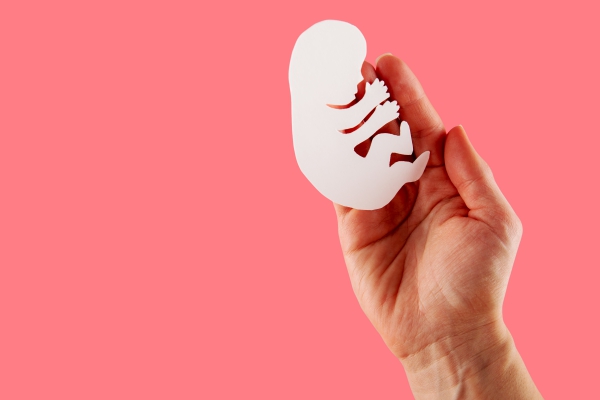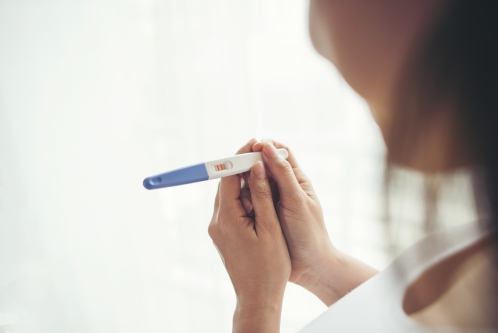Miscarriage, Pregnancy loss, Complete miscarriage, Inevitable miscarriage, Septic miscarriage, Threatened miscarriage
Description : A miscarriage is when a pregnancy is lost before 20 weeks from the last time you had your menstrual
Article Details :
What is miscarriage?
A miscarriage is when a pregnancy is lost before 20 weeks from the last time you had your menstrual period. The female reproductive system consists of the uterus, two ovaries, two fallopian tubes and the vagina. The fallopian tubes connect the ovaries to the uterus on each side. Within your menstrual cycle, once in a month, an egg is released by one of your ovaries and travels through the fallopian tube reaching the uterus.
Meanwhile, if sexual intercourse has occurred, the male’s sperm may fertilize the egg and this is when pregnancy begins. Once fertilization occurs, new cells rapidly develop forming a bundle of cells known as the embryo. This will then implant into the inner wall of the uterus. Once implanted, it continues to grow and develop in a sac filled with a fluid known as amniotic fluid. After several weeks, the embryo is now referred as a foetus.
Miscarriage is common among women of reproductive age. It occurs in 8-20% of women who know that they are pregnant before 20 weeks of gestation while 80% of it occurs in the first 12 weeks. The actual rate of miscarriage is much more than that as many women are not even aware that they were pregnant and has a miscarriage.
What are the causes and risk factors of miscarriage?
The most common cause of miscarriage is due to abnormalities (mainly genetic) of the embryo. This accounts for 80-90% of miscarriages. This is due to abnormalities in the chromosomes of the embryo. Chromosomes are thread-like structures found in human cells which encodes for specific instructions that makes each individual unique. Some genetic abnormalities are not compatible with life and inevitably result in miscarriages.
The following factors can also increases your risk of having a miscarriage:
- Increased maternal age: This is because there is an increased risk of having genetic abnormalities in the embryo. Similarly, advanced paternal age can also contribute.
- Having a history of recurrent miscarriages
- Mother having structural abnormalities in her reproductive system such as defects in the uterus, uterine fibroids or incompetent cervix
- Mother having active infections during early pregnancy including rubella virus, cytomegalovirus, Listeria infection, Toxoplasmosis, malaria, brucellosis, Human immunodeficiency virus (HIV), dengue fever, influenza and bacterial vaginosis
- Mother having other medical conditions including polycystic ovarian syndrome, poorly controlled diabetes mellitus, kidney diseases, systemic lupus erythematosus, thyroid diseases which are untreated and severe hypertension
- Mother consuming the following: tobacco, alcohol, cocaine, caffeine in high doses
- Stress during early pregnancy can induce a miscarriage

What are the symptoms of a miscarriage?
The most common symptoms of a miscarriage includes bleeding from the vagina and pain in the abdomen. However, these symptoms may also arise in a normal pregnancy and therefore it is always recommended that you seek medical help as soon as you notice these symptoms to rule out or confirm a miscarriage.
There are different types of miscarriages. These include the following:
- Threatened miscarriage: In this type of miscarriage, the only sign is bleeding from the vagina with no other problems. The opening of the uterus, also known as the cervix, is closed and the uterus size corresponds to the number of weeks of pregnancy. This means that the embryo/foetus is still in the uterus. Depending on the number of weeks reached, the foetal heart can be heard using special devices, meaning that the baby is alive. The bleeding resolves and the pregnancy continues to term in most cases. However, in some cases, the bleeding may become more severe and miscarriage follows.
- Inevitable miscarriage: In this type of miscarriage, the loss of the pregnancy cannot be avoided. The cervix is found open and is associated with heavy bleeding and abdominal pain.
- Incomplete miscarriage: In this type of miscarriage, most of the pregnancy tissue (embryo and associated tissues) have been passed out of the uterus. However, some tissues have remained. This may include tissues of the placenta. The cervix is open accompanied by heavy bleeding.
- Complete miscarriage: A complete miscarriage is when all the tissues of pregnancy has been passed followed by the closure of the cervix. It is associated with periods of bleeding and abdominal pain which subsides without any treatment.
- Septic miscarriage: In this type of miscarriage, an infection has developed following a miscarriage. It is characterized by fever, chills, generalized body pain, abdominal pain, bleeding from the vagina and foul smelling vaginal discharge.
How is the diagnosis of miscarriage made?
In many cases the diagnosis of miscarriage is made based on the woman’s symptoms and pelvic examination. This procedure involves your doctor inserting his/her fingers inside of your vagina to feel for the cervix as well as to see if there is passage of pregnancy tissues.
In many cases, your doctor will perform tests to confirm the diagnosis and to determine whether the foetus is still alive. It is also important to check whether the pregnancy is inside of the uterus as if it is not, this requires immediate evaluation and Read more





